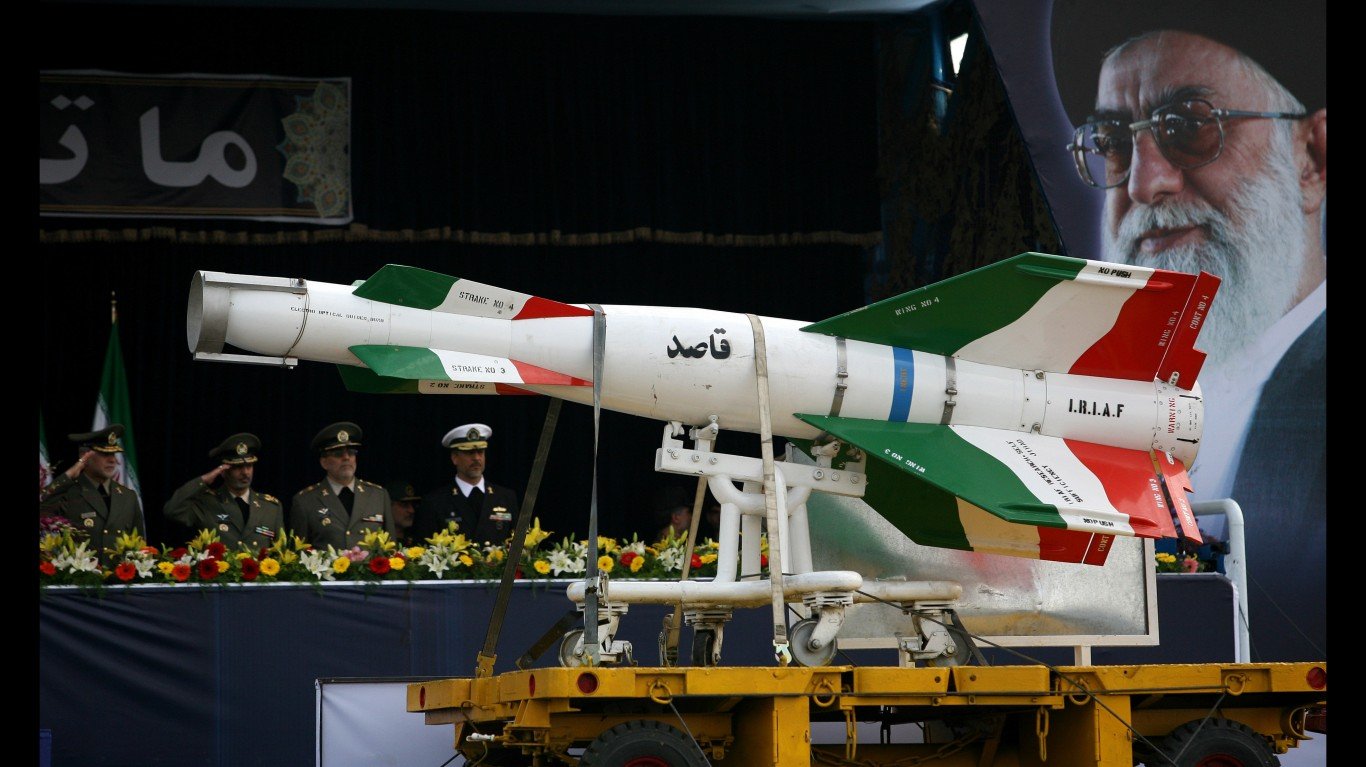

The New York Times reported Thursday that President Trump first authorized a retaliatory strike against Iran for shooting down a U.S. surveillance drone and then withdrew the authorization following what the newspaper’s sources called “intense discussion and debate … among the president’s top national security officials and congressional leaders.”
Why didn’t Trump pull the trigger? After all, both the Iranians and the Americans acknowledge that the RQ-4 Global Hawk drone was shot down by an Iranian surface-to-air missile. The only dispute appears to be the exact location of the drone at the time it was downed. Thus far, no one from the U.S. side has indicated whether or not the strike will be brought back to life at a later date.
The RQ-4 Global Hawk, built by Northrop Grumman, costs about $123 million apiece, more even than the famously expensive Lockheed Martin F-35A Air Force fighter jet that costs about $89.2 million per copy; more than the F-35B short take-off version at $115.5 million each,; and more than the Navy’s F-35C, with a price of $107.7 million a copy.
So, the Iranians shoot down an expensive piece of U.S. military hardware and the U.S. response is at best muted. Why? Perhaps the answer comes from a June 2016 report of a war-game exercise that considered how just such a situation might come up.
Given the puckish title of “Game of Drones,” the exercise considered “how the widespread availability of drones will change conflict, particularly in ambiguous engagements that remain below the threshold of conventional war.” In other words, is an attack on an un-crewed drone the same as shooting down a crewed aircraft?
The short answer is that drones have altered the tactical risk by eliminating the presence of humans. Alexandra Sander, who wrote the report about the exercise when she was a research associate at the Center for a New American Security, noted: “State teams often viewed drones as a relatively expendable resource to carry out operations that, if conducted using human-inhabited aircraft, might have been prohibitively risky or costly. As a result, drones changed the calculus surrounding the use of force, lowering the threshold for military action in some circumstances because the perceived risk was lower.”
Even though drones lower the tactical risk, “secondary strategic and political risk” rises because the drones increase the “likelihood of engaging in conflicts in the first place.” That appears to be what happened over at the Gulf of Oman, where the drone went down. President Trump insists that the Global Hawk was positioned over international waters, a claim the Iranians dispute. Trump even attributed the drone downing to someone “loose and stupid” in Iran.
Had the Iranians shot down an F-35 with a crew onboard, would the U.S. response have been different? Almost certainly and probably because the Pentagon has planned ahead for just such an event. This time, however, there do not appear to have been any plans in place for an attack on a U.S. drone. Or if there were such plans, perhaps the president deemed them insufficient or inappropriate.
Iran’s military capabilities are among the largest in the world, though still far smaller than those of the United States. Strategically, it is far more important for the United States to stop Iran from developing nuclear weapons than to strike a retaliatory blow in response to the downing of an unmanned drone. But, as they say, it’s complicated.
Take This Retirement Quiz To Get Matched With A Financial Advisor (Sponsored)
Take the quiz below to get matched with a financial advisor today.
Each advisor has been vetted by SmartAsset and is held to a fiduciary standard to act in your best interests.
Here’s how it works:
1. Answer SmartAsset advisor match quiz
2. Review your pre-screened matches at your leisure. Check out the advisors’ profiles.
3. Speak with advisors at no cost to you. Have an introductory call on the phone or introduction in person and choose whom to work with in the future
Take the retirement quiz right here.
Thank you for reading! Have some feedback for us?
Contact the 24/7 Wall St. editorial team.
 24/7 Wall St.
24/7 Wall St.